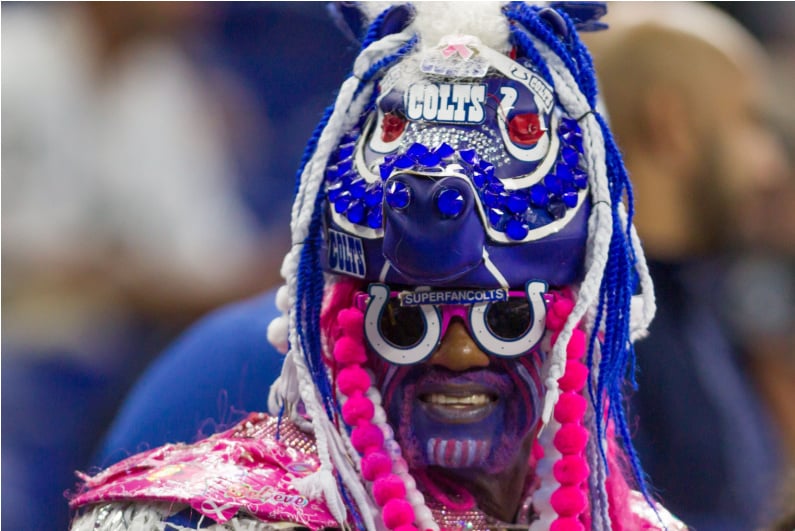The hidden secret to fantasy football
For many NFL fans around the country, drafting a fantasy football team is a mandatory precursor to the eventual kickoff of the 17-game season.
There are all sorts of different strategies for drafting rosters, such as only taking the most valuable positions and later trading for other positions of need, going through each position one-by-one, and avoiding rookies entirely, to name a few.
a mathematical approach that fantasy GMs should take when they draft their rosters
Without replacing too much of the entertainment value of fantasy football with pragmatism, there is a mathematical approach that fantasy GMs should take when they draft their rosters—let’s talk about why.
Fantasy football drafting 101
Fantasy sports encourage team owners to put the greatest distance possible between themselves and their competitors. The goal is always to score the most points and win every week, but being second-best will still put players in favorable positions against the majority of their opponents. Pay-per-entry leagues also frequently delegate prize money to the top three finishers, which would still put the runner-up GM on the podium.
Let’s boil that idea down to the most basic element: if a player cannot finish first, then finishing as close to first as possible is the next-best option. Sounds easy right? Wrong!
Pretend that you are in control of a fantasy team that has the next pick in the draft. You desperately want to take Joe Mixon with your next pick because you feel like he’d be a solid early-round addition to your roster.
To your horror, the person with the pick ahead of you takes Mixon off the board. You are resigned to the fact that you will have to take the next-highest-ranked running back and send in the pick.
players want to limit the gaps
This decision could ultimately be a critical mistake. While it is true that players want to limit the gaps between them and opponents, that is not accomplished by linearly following a planned order of positions, looking at rankings, or following the trend of where the rest of the picks are going.
Gaining the advantage
Here’s what a fantasy football player in the situation above, and truly, with nearly every pick they ever make, should do: find the disparities.
Using rankings from 2022, let’s assume the top ten receivers and running backs are off the board, and the top picks from each of those positions are now Dalvin Cook and Ja’Marr Chase. Cook only scored 11.7 more points than the next-closest back, and Chase only .5 more than the next wide receiver.
Travis Kelce produced 100.9 more points than the TE2
Now, look at quarterbacks and tight ends—Patrick Mahomes scored 21.88 more points than the second-highest-scoring QB, and Travis Kelce produced 100.9 more points than the TE2. In this situation, drafting Kelce would create the largest separation in scoring, meaning that opponents would have the least opportunity to account for the difference between him and their starter.
| Player | Position | 2022 Points | Next-Highest Points at Position | Scoring Disparity |
| Dalvin Cook | RB | 237.8 | 226.1 | +16.6 |
| Ja’Marr Chase | WR | 242.4 | 241.9 | +0.5 |
| Patrick Mahomes | QB | 417.4 | 395.52 | +21.88 |
| Travis Kelce | TE | 316.3 | 215.4 | +100.9 |
Think of it like line shopping in sports betting or price hunting to see which grocery store is charging the lowest amount for a gallon of milk. It’s a simple concept, yet fantasy football players often lose sight of the main goal when drafting their rosters.
The risk of following this method is that other players will also fly off the board before the GM gets to make their next pick, which is why it is important they consider not just the immediate disparity, but the one that will likely exist the next time they make their pick. So, rather than consider the next-best running back or wide receiver, they should look closer to the 15-20 mark.
This approach can and should be used in all rounds across all positions.
Other factors
Analyzing past results presents the implicit bias of hindsight, and the simple fact is that drafting fantasy players is a gamble. However, there are certain considerations players can weigh before making their pick that can reduce the risk.
The two most important qualities in fantasy football are availability (health) and volume. Players can’t score if they don’t get on the field and if they don’t get the football.
Another factor in determining a player’s likelihood to produce is their consistency. A player that had a career year out of nowhere and was unreliable in prior years is not a safe pick, especially for an early-round selection.
target players they believe are going to put up huge numbers every Sunday
First-round picks also don’t necessarily need to be made following the principle of limiting/increasing scoring disparities. Instead, GMs should target players they believe are going to put up huge numbers every Sunday and will be the catalyst of their squad.
Beyond that, there is no reason for fantasy football players not to use the approach above. It is the most efficient way to strip away the margins and gain a scoring advantage every week.
Keep this in mind as the NFL season draws nearer.
The post Win Your Fantasy Football League With This Draft Strategy appeared first on VegasSlotsOnline News.
Source link
